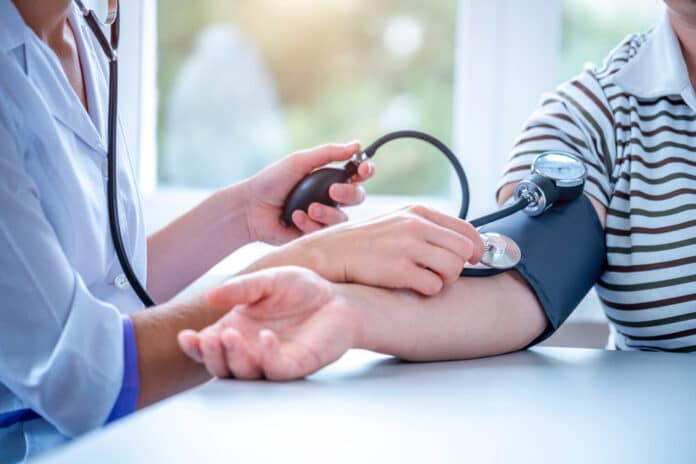Hypertension is a key risk factor for cardiovascular disease (CVD), the leading cause of morbidity and mortality worldwide.
Home blood pressure monitoring is more convenient and effective for diagnosing and controlling hypertension than clinic-based monitoring. However, research on its economic impact has yet to be conducted. The new study aims to evaluate the health and economic implications of adopting home blood pressure monitoring among adults with hypertension in the United States.
According to a study published in the American Journal of Preventive Medicine, increasing home blood pressure monitoring among hypertensive adults in the United States could considerably lower the burden of cardiovascular disease and save money on healthcare in the long run.
The study’s findings indicate that increasing home monitoring can address chronic health inequities faced by racial and ethnic minorities and rural populations by lowering cardiovascular events among US adults.
Co-lead investigator Yan Li, Ph.D., Professor, School of Public Health, Shanghai Jiao Tong University School of Medicine, explained, “Our study is among the first to assess the potential health and economic impact of adopting home blood pressure monitoring among American adults with hypertension. We found that it facilitates early detection, timely intervention, and prevention of complications, leading to improved control and better health outcomes.”
According to the 2019 Behavioural Risk Factor Surveillance System (BRFSS) data, installing home blood pressure monitoring might result in a 4.9% decrease in MI cases and a 3.8% reduction in stroke occurrences over 20 years.
Non-Hispanic Blacks, women, and rural people avoided cardiovascular events. They saved more money using home blood pressure monitoring than non-Hispanic Whites, men, and urban inhabitants. Home blood pressure monitoring in rural regions could reduce 21,278 MI cases per million persons, compared to 11,012 MI cases in urban areas. Rural populations have a higher prevalence of hypertension and uncontrolled hypertension than city dwellers, and they frequently encounter extra challenges in getting primary care.
The study also predicted an average of 4.4% per person annual savings and $7,794 in healthcare expenditures per person over 20 years due to the adoption of home blood pressure monitoring and the accompanying reduction in cardiovascular disease incidence. Previous economic analyses of home blood pressure monitoring have generally focused on local health systems or employed small-scale, short-term, randomized controlled trials.
In the United States, hypertension is an urgent public health issue, with severe consequences for developing heart disease and stroke and significant healthcare expenses. Traditional clinic monitoring, the most prevalent approach for BP measurement and hypertension diagnosis, has many limitations, including patients not attending clinics frequently enough to detect the problem and accuracy hampered by “white coats” or “masked” effects.
Compared to sporadic measures taken during clinic visits, home blood pressure monitoring eliminates these barriers and gives more comprehensive and reliable data. However, due to inadequate health insurance coverage, a lack of investment in preventive treatments, and limited health promotion initiatives given by primary care physicians, the highly successful practice has yet to be extensively embraced in the United States. The findings provide persuasive evidence to encourage healthcare systems and payers’ expanded use of this intervention.
The conclusion shows that Home blood pressure monitoring reduces cardiovascular disease burden, saves healthcare money, and improves health inequities.
Journal Reference:
- Yan Li, Weixin Li, etal.The Health and Economic Impact of Expanding Home Blood Pressure Monitoring. American Journal of Preventive Medicine.DOI: 10.1016/j.amepre.2023.05.010
